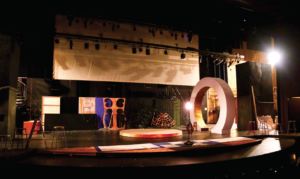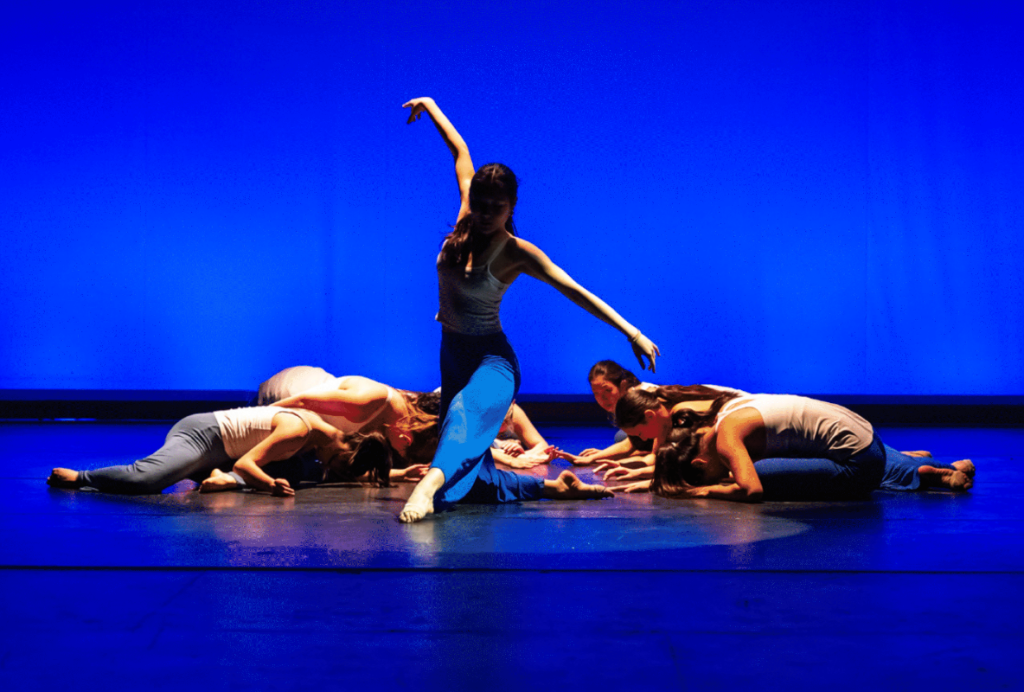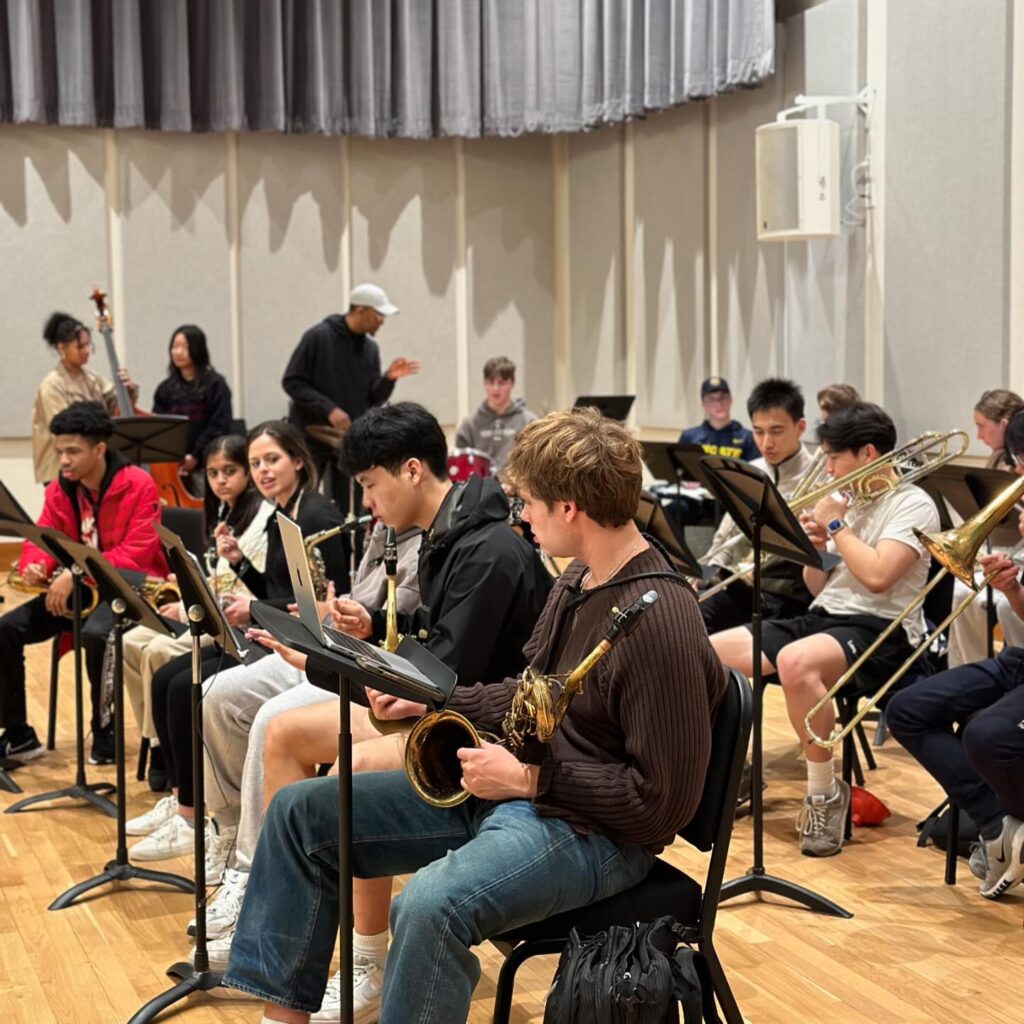
Ms. Tracy Ginder-Delventhal’s production highlights women’s suffrage and gender identity. Photo by Jenny Guo/The Choate News
A Midsummer Night’s Dream will be performed in the Paul Mellon Arts Center from February 13 to 15. Because Midsummer takes place in a male-dominated society, Ms. Tracy Ginder-Delventhal, acting teacher and director of the play, wished to also portray the struggle for women’s suffrage and the process of finding one’s authentic identity and voice in it.
While Ms. Ginder-Delventhal tailors the design of sets, soundtracks, and props to suit individual plays, the general process remains unchanged from play to play. Ms. Ginder-Delventhal prefers to first immerse herself in the time period in which the play takes place by listening to music that “feels to me like how the play feels to me.” She then applies the appropriate music to specific scenes. In Midsummer, she uses popular music from the 1920s for scenes in the palace and music by Lindsey Stirling, an American violinist, for those in the woods.
In addition, Ms. Ginder-Delventhal researches art forms such as fashion from the play’s time period, to ensure that the play showcases historical accuracy.“Costume design is particularly important because clothing defines the way people move, and behavior is generally reflected in the clothing,” Ms. Ginder-Delventhal said.
To construct a set of props in theme with each specific play, Ms. Ginder-Delventhal looks for imagery that matches her perception of the play. In this case, Ms. Ginder-Delventhal examined pictures of English and cottage gardens and Art Deco. “It’s like building a puzzle — each element that I find will lead me to find another element until I could create a unified piece,” she said.
Although the process of creating the play starts with the imagination of Ms. Ginder-Delventhal, the immersive world of the play is created collaboratively by a team of various faculty and students. For Midsummer, Sparks Mellon (the set design team), and Ms. Ginder-Delventhal worked together to highlight the contrast between life in the palace and life in the woods. For Ms. Ginder-Delventhal, Midsummer is a portrait of female imprisonment and freedom, as shown through the controlled, male-dominated palace and the liberated, open forest.
The lighting group, led by Technical Director of the Arts Mr. Mark Gostomski, also helps to bring the story to life through colorful lighting. When Mr. Gostomski has a particular idea, he meets with Ms. Ginder-Delventhal to ensure that their visions are cohesive. The lighting process, as Mr. Gostomski described, is a part of the storytelling process achieved through color choice, specific lighting of characters, or deliberate focus on certain parts of the stage to guide the audience’s line of sight.
To enhance the contrast between the confining, constricting palace and the mythical creatures in the forests, Mr. Gostomski designed distinct color palettes for each world. Toward the end of the show when the palace and the woods merge, Mr. Gostomski created another palette that blended the two worlds together.
“We are constantly retrospecting on our designs: how do we create each element to tell the story but also not have it [be] muddy? How does the bright and dark lighting react to all the characters on stage? Are we actually presenting the story that we wanted to convey?” Mr. Gostomski said. “We spend a lot of time doing little adjustments to ensure that the stories are as clear as we make them.”
Theater, as Ms. Ginder-Delventhal beautifully put, “is a collaborative art” that involves all of the directors, designers, crew, and actors who support and complement each other. Through Midsummer, Ms. Ginder-Delventhal and the production staff hope to emphasize “embracing your identity regardless of what those around you may think or may say. We hope that people can walk away from this play being more willing to live outside the box and being less judgmental of people who are brave enough to do so.”



